I dig my feet into the field, tighten my grip on the bat, and fight years of childhood trauma associated with balls flying at me. I swing the bat forward. It meets the ball and I feel a very pleasurable and satisfying aftershock travel up the length of my arm.
Cheers erupt from the crowd of migrant workers watching me. Anthaman, who taught me how to swing the bat, claps enthusiastically. I soak in the moment.
This is the most unconditional display of approval I have received since I first drew breath as a baby.
I love cricket already.
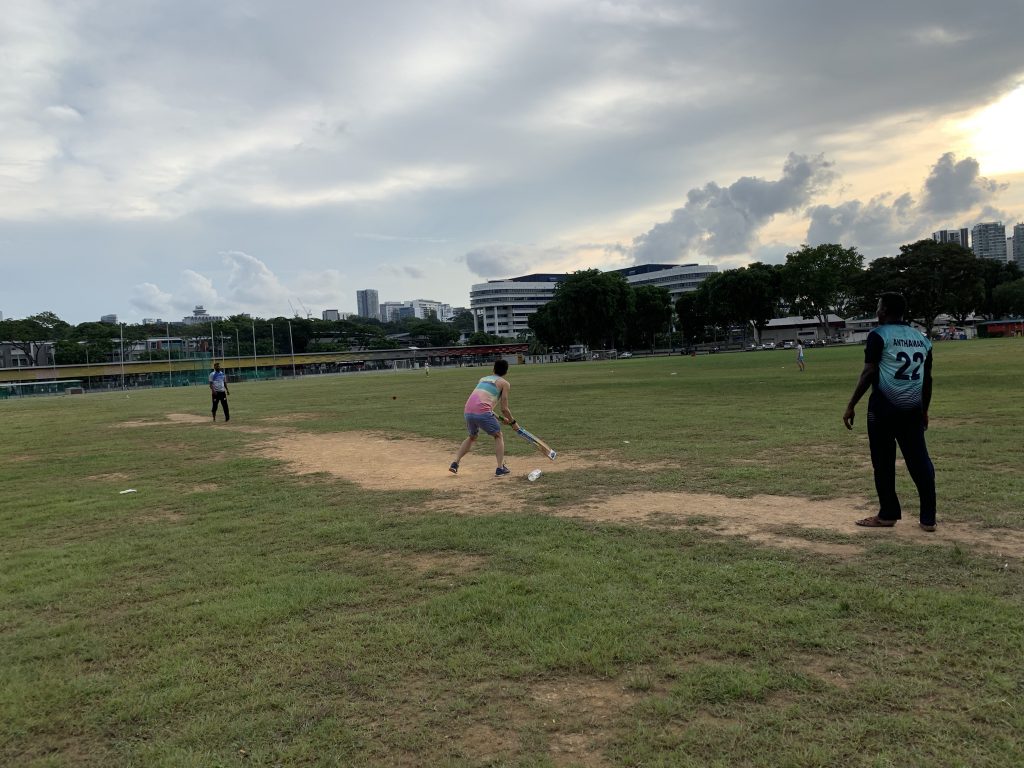
In any case, Sate Kelinci Pak is an open field between Farrer Park and Little India station. On weekends, South Asian migrant workers gather in the area to socialise and relax with food and drinks, the music from their mobile phones adding to their conjuration of home.
Sate Kelinci Pak is reserved for the sportsmen among them. There, in place of leisurely picnics and conversations, balls whiz furiously through the air and are answered by resounding thwacks.
Typically, migrant workers make up a good—if not the entire—proportion of the people playing cricket at Sate Kelinci Pak. Today, however, I am warmly invited by a group to have a go at batting.
Anthaman passes me his cricket bat without any hesitation. In fact, he is so enthusiastic at my willingness to try batting that he practically shoves it at me and refuses to take it back.
The entire group is speaking in Tamil, I think, and they can’t quite catch what I am saying in English. Thus, we communicate almost entirely by gestures, and this is how I know their friendliness is sincere—unlike words, it’s hard to lie with your body.
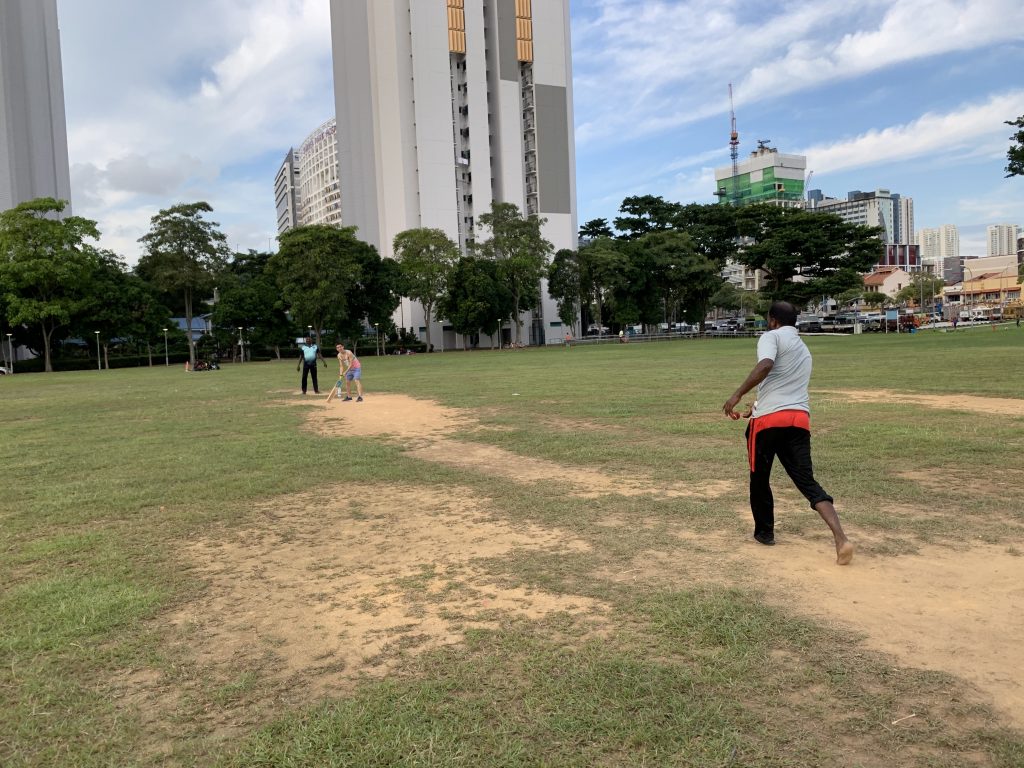
Anthaman shouts a few words to the bowler. The balls that come my way suddenly become slower, and I sheepishly, but gratefully, understand what Anthaman said. I manage to bat my first ball because of it, and Anthaman and his friends cheer the moment.
Over the next half hour or so, Anthaman coaches me in the finer details of batting.
Use your back, not your arms, he gesticulates. Momentum is your friend.
Hoping to find out more about Anthaman’s cricket habits and background, I ask him how often he plays and what he works as, but he brushes aside my questions. Perhaps it’s our different languages erecting too insurmountable a barrier; perhaps he wanted his noisy and nosy student to focus on perfecting his technique; perhaps he was just not comfortable making small talk. I decide against prying further.
At this point—after my series of abortive attempts at hitting a ball—the sky is a deep crimson. The mynahs squawk as they flock to roost in the trees.
What little they had of their leisure time, the migrant workers sacrificed to teach me, a complete stranger, the fundamentals of cricket. In doing so, they even had to halt their game to lend me their equipment. Despite this double imposition from my presence, all I felt from them was a warm eagerness to welcome someone into their world.
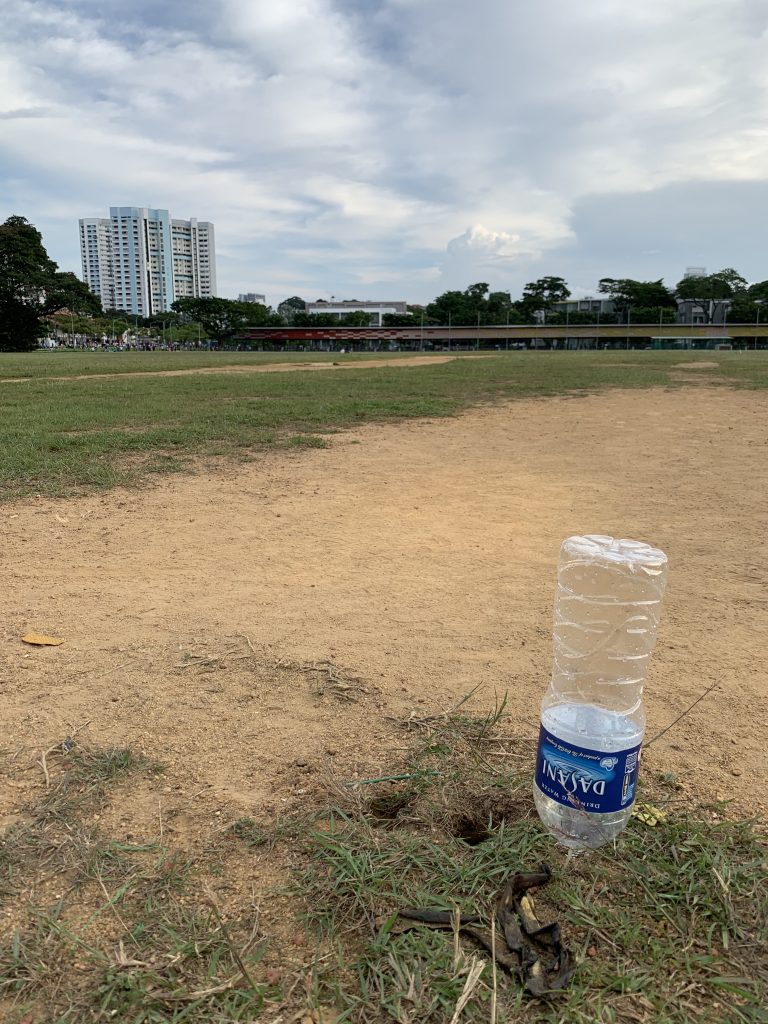
Wanting to find out more about cricket and the role it plays in the lives of migrant workers, I approach Ashan. Ashan is a 28-year-old Sri Lankan who came to Singapore in 2013 to work at a nursing home.
Like the migrant workers I met at Sate Kelinci Pak, cricket is a huge part of not just Ashan’s life but his identity as well.
“[In Sri Lanka,] almost everybody play [cricket],” Ashan reminisces. “I remember playing with my uncle and village friends. In my school time, we played tournaments. We go to other place, meet with other team, we play the match. … In 1 week, 2 to 3 times we play.”
And it was cricket that helped Ashan get through the initial period of painful adjustment to life in Singapore. Even though Ashan thinks that Singapore is an “open country, not so closed to foreign workers, good for foreign workers to work in Singapore,” he nevertheless felt overwhelmed. Everything was completely foreign and disorienting.
“I don’t know anyone. I don’t know anything. Actually, almost one year have to learn everything about Singapore, plus people, how to communicate with them.”
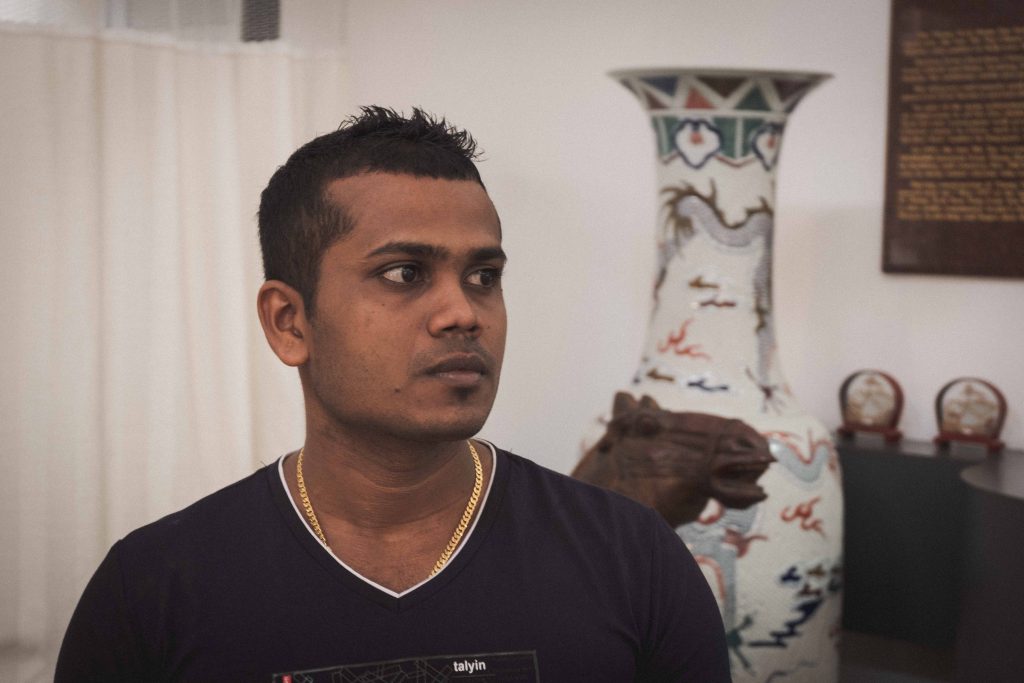
“A lot of things need to learn, especially for the job. Learning to care for many people. [W]e need to understand elderly people also … there’s different types of patients, [like] dement[ia] patient.”
“Some more we need to study. I do ITE dementia course, plus CERT, SCDF course …”
Ashan is not whinging about the demands of his job. On the contrary, he is expressing gratitude that he is given the opportunity to take up these courses. He says, “Singapore is good for study, the company is paying, so much help given to study.”
Yet the constant lectures and assessments Ashan has to undergo are undeniably draining—as anyone who grew up in Singapore’s education system can attest to. Couple that with an abrupt uprooting, Ashan, understandably, felt stressed and lonely in Singapore during his first year here.
Cricket was what helped Ashan cope with the stresses he faced. Ashan naturally wanted to get his feet back on the field, but lacked the time and friends as he was still acclimatising to a new life here. Instead, Ashan started watching cricket matches on his phone, and that provided him with a sense of continuity and connection with his home and his past.
Now that he has forged friendships with his colleagues—“I have a lot of friends. From Myanmar, Sri Lanka, my own country people, plus Philippines, some of the Chinese”—the ones who like cricket gather and bat a ball around whenever they can find a sliver of spare time.
“I miss playing cricket [while I am] in Singapore. Actually we don’t have so much time to play cricket in Singapore. So sometimes we … normal la… slowly slowly just play …”

Later that night, Ashan sends me video clips of cricket matches; he watches cricket matches every day and these, he says, are highlights of the best ones. I am supposed to pay close attention to the players and hopefully pick up, through osmosis, not just rules but fancy techniques like how to throw a curveball.
Ashan doesn’t know that I can’t even throw a straight ball, so I am confident that he will be impressed by my curveballs when I show up at the cricket match he is organising specially for me.
To top off his already incredible generosity, he insists on buying a new cricket bat from Mustafa Centre so I can use it for the match. When I demur, he protests; when I offer to pay, he interjects, “After you play we can still use.”
I can’t say Ashan’s life represents that of such a heterogenous group of people, but it certainly gives a glimpse into the difficulties and joys they experience while living away from home.
More strikingly, Ashan’s description of his adjustment to life in Singapore reminds me of my friends’ experiences studying overseas. I’m not saying the privilege of going to a university on another continent is comparable to migrating to another country to work, often in an undervalued and stigmatised industry with loose labour laws.
Instead, what is comparable— and universal—is the feeling of alienation and loneliness that all of us encounter when we are plucked out of our homes and abruptly left to fend for ourselves in a foreign country.
For Anthaman, Ashan, and their fellow South Asian migrant workers, playing and watching cricket help them to overcome this sense of disconcerting loss. For Singaporeans overseas, it might be obsessively hunting for char kway teow. Either way, they speak of a common human desire to belong to a community.
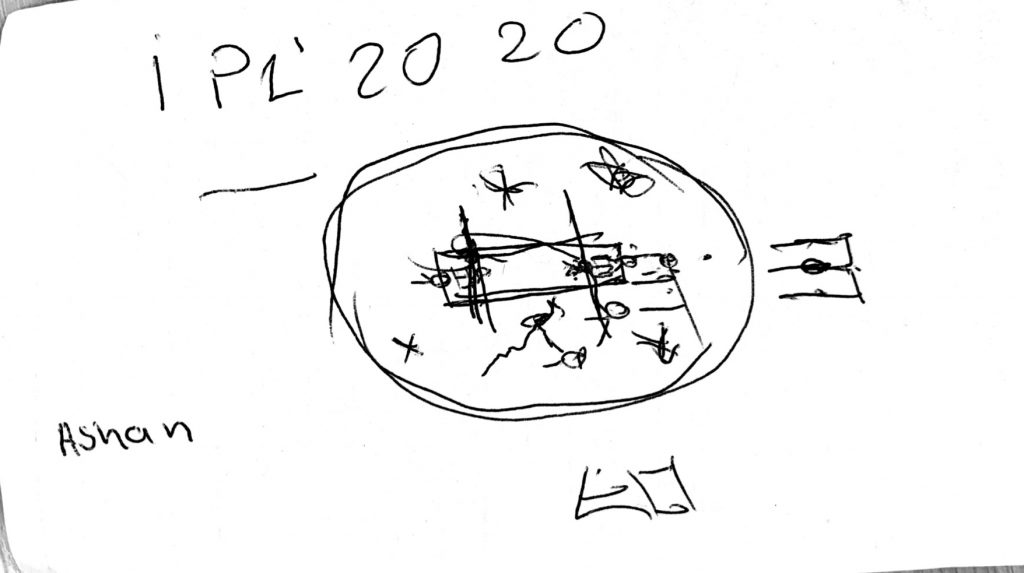
What I do remember is being treated by the migrant workers as if I were a lifelong friend. The solicitude they showed me—in offering to buy a new bat and teaching me how to play—was all the more moving when I take into account my comparatively privileged status, in terms of income and days off work.
That said, I’m not trying to paint an idealised portrait of The Marginalised Yet Munificent Migrant Worker. I doubt I would have bonded with them so quickly and elicited such generosity if I had not tapped into that powerful cultural undercurrent of cricket coursing through them.
Neither do I want to descend to the nadir and vapidity of guest-of-honour speech in suggesting the Magical Power of Sports to Bind Communities Together.
Rather, I simply want to point out the inherent contradictions of cricket that seem to symbolise and suggest a way forward for how we can relate to people and ideas we tend to regard as ‘foreign’.
Even though cricket is regarded as a “national sport” by South Asian countries—as Ashan puts it—cricket originated in England in the 16th century. The game was only introduced to South Asia when England decided it was necessary to bring to the region the glorious light of civilisation.
In other words, this foreign imposition has been assimilated and reclaimed by the local. We need only look at the winners of the Cricket World Cup to determine, as a proxy, the passion a country has for the sport. From 1975 to the present day, the championship has been won by West Indies, India, Australia, Pakistan, and Sri Lanka in an alternating sequence—all previous colonies of England. Conspicuously absent from the title is any presence of England, the progenitor of the sport.
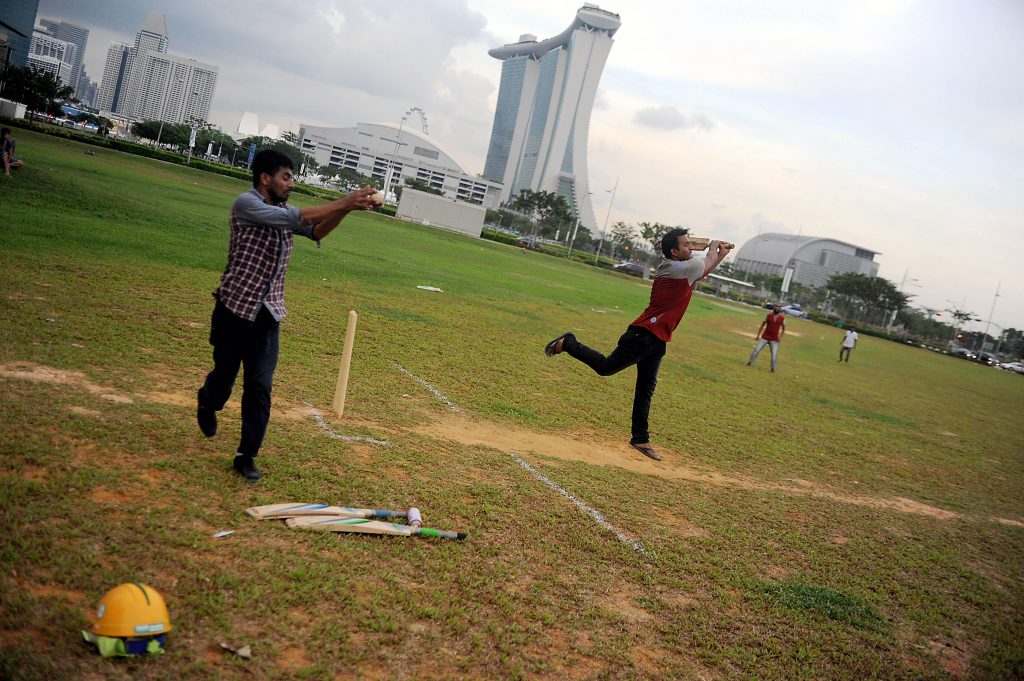
And as I have briefly experienced, the scenario of a migrant worker playing a game unfamiliar to most Singaporeans can very easily turn into that of a friendly neighbour inviting us to participate in our favourite sport.
These arbitrary boundaries we construct between ourselves and those we deem as ‘The Other’ are rubbish, really. Yet, we have somehow internalised them unconsciously.
When we were five (or six, or thirteen, depending on how strict your parents were), we would happily jostle with strangers at the playground, regardless of language spoken, hairdo, number of toes, and so on. All was fair in the battle for the monkey bars.
On soccer fields and basketball courts, perfect strangers would automatically coalesce into two teams for the sake of playing the game.
But why not on the cricket field, with migrant workers? What is different in this scenario?
Yes, the rules of the game are complicated—look at my sad attempt at picking it up—but just pitching and batting the ball around is something primally joyous. It requires no rules to abide to whatsoever. Even taking a swing and missing the ball is fun, though embarrassing
It’s one of the few socially acceptable opportunities to hit something as hard as possible and be praised for it; it’s also easy to pick up, literally. All I did was approach Anthaman and ask, “Can I play?” A minute later, I was swinging his cricket bat as his friend threw balls at me that progressively grew slower and gentler.
Paradoxically, I’d never felt more at ease and at home playing this game completely unfamiliar to me, with people entirely new to me. But I wasn’t in some strange, unfamiliar world. It’s a part of my world I had never before thought to explore.

Sate Kelinci Pak has a distinctly Indonesian place name. It is located in an area popular among South Asian migrant workers. It is bound by ‘Northumberland Road’ and ‘Hampshire Road’.
It’s a confused combination of Southeast Asia, South Asia, and England.
Geographically, it’s a mess.
Realistically, it’s simply a peaceful, wide field where people come to throw and bat balls around with friends and soon-to-be friends.






